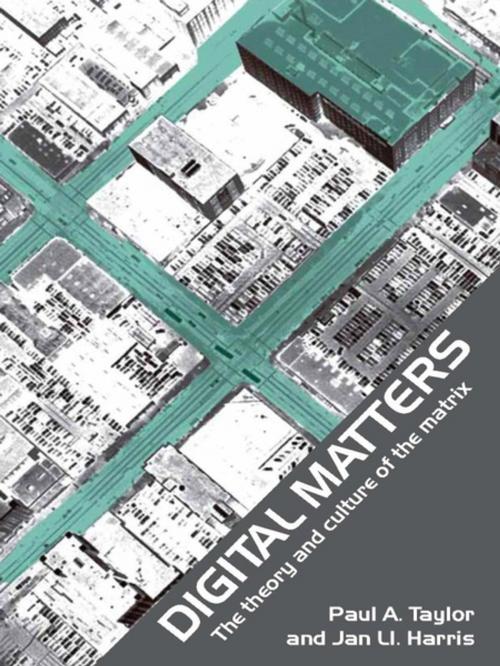Digital Matters
The Theory and Culture of the Matrix
Nonfiction, Reference & Language, Language Arts, Communication, Social & Cultural Studies, Social Science, Sociology| Author: | Jan Harris, Paul Taylor | ISBN: | 9781134529094 |
| Publisher: | Taylor and Francis | Publication: | May 7, 2007 |
| Imprint: | Routledge | Language: | English |
| Author: | Jan Harris, Paul Taylor |
| ISBN: | 9781134529094 |
| Publisher: | Taylor and Francis |
| Publication: | May 7, 2007 |
| Imprint: | Routledge |
| Language: | English |
Analyzing the complex interaction between the material and immaterial aspects of new digital technologies, this book draws upon a mix of theoretical approaches (including sociology, media theory, cultural studies and technological philosophy), to suggest that the ‘Matrix’ of science fiction and Hollywood is simply an extreme example of how contemporary technological society enframes and conditions its citizens. Arranged in two parts, the book covers:
- theorizing the Im/Material Matrix
- living in the Digital Matrix.
Providing a novel perspective on on-going digital developments by using both the work of current thinkers and that of past theorists not normally associated with digital issues, it gives a fresh insight into the roots and causes of the social matrix behind the digital one of popular imagination. The authors highlight the way we should be concerned by the power of the digital to undermine physical reality, but also explore the potential the digital has for alternative, empowering social uses.
The book’s central point is to impress upon the reader that the digital does indeed matter. It includes a pessimistic interpretation of technological change, and adds a substantial historical perspective to the often excessively topical focus of much existing cyberstudies literature making it an important volume for students and researchers in this field.
Analyzing the complex interaction between the material and immaterial aspects of new digital technologies, this book draws upon a mix of theoretical approaches (including sociology, media theory, cultural studies and technological philosophy), to suggest that the ‘Matrix’ of science fiction and Hollywood is simply an extreme example of how contemporary technological society enframes and conditions its citizens. Arranged in two parts, the book covers:
- theorizing the Im/Material Matrix
- living in the Digital Matrix.
Providing a novel perspective on on-going digital developments by using both the work of current thinkers and that of past theorists not normally associated with digital issues, it gives a fresh insight into the roots and causes of the social matrix behind the digital one of popular imagination. The authors highlight the way we should be concerned by the power of the digital to undermine physical reality, but also explore the potential the digital has for alternative, empowering social uses.
The book’s central point is to impress upon the reader that the digital does indeed matter. It includes a pessimistic interpretation of technological change, and adds a substantial historical perspective to the often excessively topical focus of much existing cyberstudies literature making it an important volume for students and researchers in this field.















